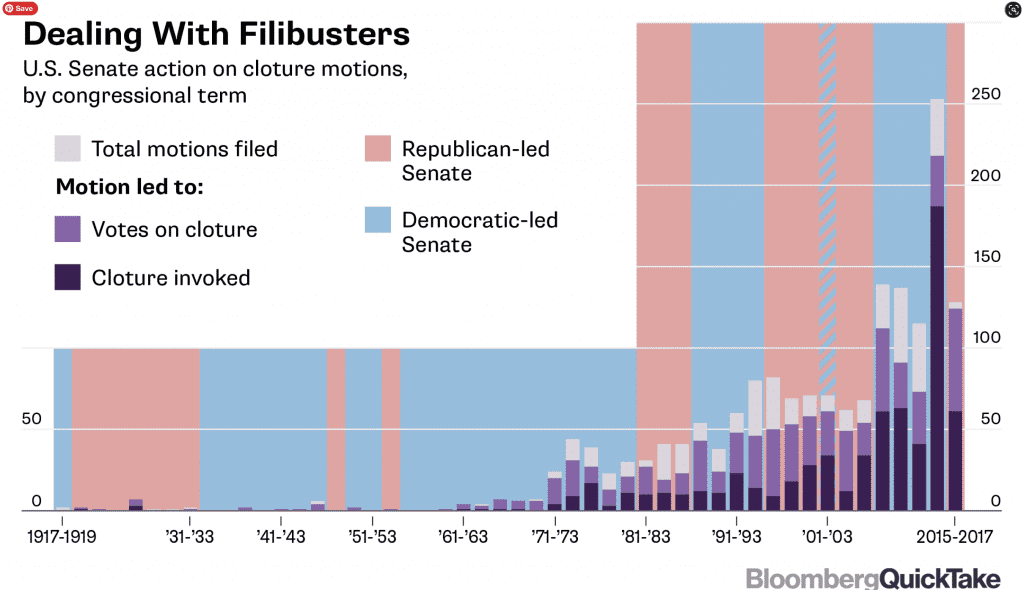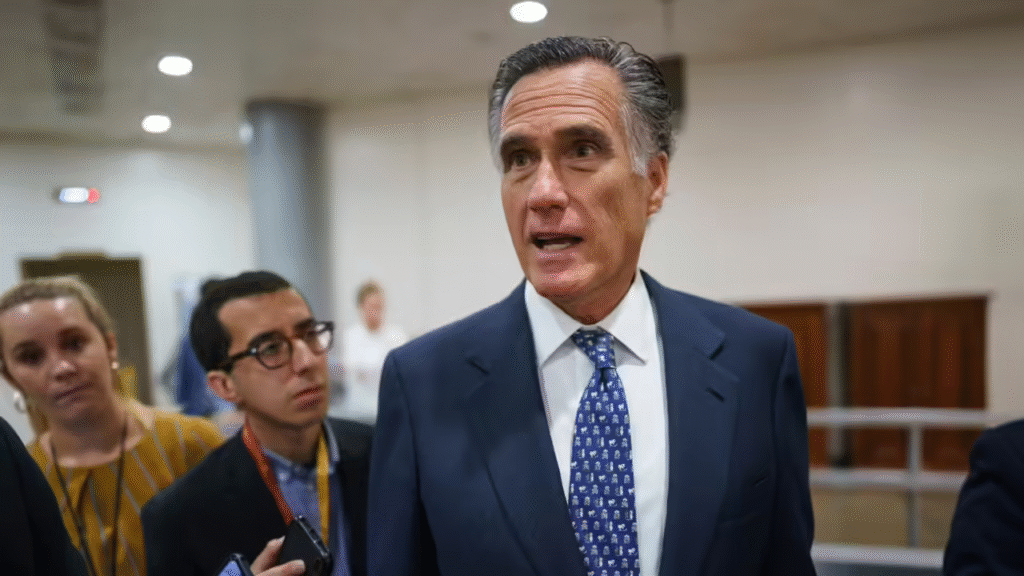
Filibuster reform has emerged as one of the most consequential debates in U.S. politics. Advocates argue it could end legislative gridlock and restore majority rule, while critics warn it may erode Senate traditions and deepen partisan divisions. This article explores the history, current debates, real-life case studies, and future implications of filibuster reform—answering the key questions Americans are asking about whether it could change Senate dynamics forever.
Introduction: Why Filibuster Reform Matters Today
In the corridors of the U.S. Capitol, the word filibuster carries enormous weight. It is more than a procedural quirk—it is the difference between whether legislation addressing healthcare, voting rights, gun control, or climate change becomes law or dies quietly in the Senate chamber.
As America grapples with increasing polarization, the filibuster has shifted from an occasional procedural maneuver to a near-constant barrier. What was once used sparingly to encourage compromise has now become a tool to obstruct nearly every major initiative. The result? Gridlock, frustration, and an American public asking whether the Senate is still capable of solving the nation’s most pressing problems.
The conversation around filibuster reform is not merely about Senate rules. It’s about democracy itself—how it functions, whose voices count, and whether the United States can meet the challenges of the 21st century.
What Exactly Is the Filibuster?
At its core, the filibuster is a Senate rule that requires a three-fifths majority (60 votes) to end debate on most legislation. If fewer than 60 senators support cloture (ending debate), a bill can be stalled indefinitely, even if it has majority support.
This rule gives the minority party significant leverage. Unlike the House of Representatives, where the majority rules, the Senate’s filibuster ensures the minority can block or delay action.
Real-world example: In 2013, Republicans repeatedly blocked President Obama’s judicial nominees. Frustrated, Senate Majority Leader Harry Reid invoked the “nuclear option,” reducing the threshold for most judicial confirmations to 51 votes. This move permanently changed how judges are confirmed and set a precedent for future reforms.
Why Is Filibuster Reform Back in the Spotlight?
The filibuster has always been controversial, but in today’s hyper-partisan climate, it has become almost routine. According to data from the Brookings Institution, filibuster use has skyrocketed in the last two decades.
In 2021, Democrats sought to pass comprehensive voting rights legislation, but despite having majority support, the bill was filibustered. To many Americans, this was a wake-up call: how can legislation supported by most senators and millions of citizens be blocked by procedural rules?
The answer lies in the filibuster, and this is why reform has become a rallying cry for many political leaders, activists, and ordinary citizens.
Could Filibuster Reform Change Senate Dynamics?
The short answer is yes. Filibuster reform could fundamentally reshape how the Senate operates, with ripple effects across every aspect of American politics.
Here are the potential impacts:
- Faster Passage of Legislation: Reform would allow bills to pass with a simple majority, reducing delays.
- Greater Accountability: Senators would no longer be able to hide behind procedural rules; their votes would directly reflect their positions.
- Policy Volatility: With each election cycle, the majority could push through sweeping policy changes without bipartisan support.
- Reduced Minority Power: The minority party would lose its most powerful tool for influence.
This would not only alter Senate dynamics but also the balance of power between political parties in Washington.
A Look Back: Historical Precedents of Filibuster Reform
The filibuster has evolved significantly over time. It’s not in the Constitution—it is a Senate-created rule.
- 1917: The Senate introduced cloture, allowing debate to end with a two-thirds vote.
- 1975: The cloture threshold was lowered from 67 to 60 votes.
- 2013: Democrats eliminated the filibuster for most judicial and executive branch nominees.
- 2017: Republicans extended this to Supreme Court nominees, enabling the confirmation of Justice Neil Gorsuch with only 51 votes.
Case study: The 2017 rule change reshaped the Supreme Court, paving the way for the appointments of Justices Brett Kavanaugh and Amy Coney Barrett. The ideological shift on the Court continues to influence landmark decisions, from abortion rights to environmental policy.
These reforms illustrate how changes to the filibuster can have long-term consequences that extend far beyond the Senate chamber.
The Case for Filibuster Reform
Supporters argue reform is necessary to restore functionality to the Senate. Their main points include:
- Restoring Majority Rule: Democracy should operate on the principle that the majority governs.
- Ending Legislative Gridlock: The filibuster has been weaponized to block virtually all major legislation.
- Responding to Crises: Issues like climate change, healthcare reform, and voting rights require swift action.
Example: During the COVID-19 pandemic, relief legislation was passed largely through budget reconciliation—a process exempt from the filibuster. Without reconciliation, millions of Americans may have faced delays in receiving economic assistance.
The Case Against Filibuster Reform
Opponents warn that reform could destabilize American democracy. Their key arguments include:
- Protecting Minority Rights: The filibuster ensures smaller states and minority parties maintain influence.
- Encouraging Compromise: The 60-vote threshold forces bipartisan negotiations.
- Preventing Policy Whiplash: Without the filibuster, laws could swing dramatically with each election.
Example: Conservatives argue that without the filibuster, Democrats during the Obama administration could have passed sweeping reforms, only for Republicans to repeal them later. This constant back-and-forth could create national instability.
Policy Areas Most Impacted by Filibuster Reform
If the filibuster were reformed or abolished, several policy areas would see immediate effects:
Voting Rights
Legislation like the John Lewis Voting Rights Advancement Act could pass, ensuring nationwide protections against voter suppression.
Gun Control
Bills requiring universal background checks or banning assault weapons, which currently lack 60 votes, could become law with a simple majority.
Climate Policy
Major investments in renewable energy and climate adaptation could move forward more quickly.
Healthcare
Proposals such as Medicare for All or lowering prescription drug prices could gain traction.
Real-world case: The 2022 Inflation Reduction Act passed only because it fit under budget reconciliation rules. Without filibuster constraints, Democrats could have pursued even more expansive reforms.
Why Do Some Call the Filibuster “Undemocratic”?
Critics argue the filibuster undermines democratic principles because it allows 41 senators—who may represent far less than half of the U.S. population—to block legislation supported by the majority.
For instance, senators representing smaller states like Wyoming or North Dakota hold the same power as those representing populous states like California or Texas. When combined with the filibuster, this gives disproportionate power to a minority of Americans.

Could Filibuster Reform Backfire?
Absolutely. While Democrats currently push for reform, history suggests power shifts quickly in Washington. If Republicans regain control of the Senate and presidency, they could use a filibuster-free chamber to pass conservative policies on taxes, abortion, or immigration without bipartisan support.
This is why some Democrats remain hesitant, fearing long-term consequences.
Alternative Proposals Short of Elimination
Reform doesn’t have to mean total abolition. Options include:
- Talking Filibuster: Requiring senators to physically speak on the floor to maintain a filibuster.
- Lowering the Threshold: Reducing the cloture requirement from 60 to 55 votes.
- Issue-Based Exceptions: Allowing certain types of legislation (like voting rights) to bypass the rule.
These options aim to preserve minority rights while making the Senate more functional.
Real-Life Stories: The Human Impact of Filibuster Battles
Behind the procedural debates are real people whose lives are affected.
- In 2021, activists from Georgia traveled to Washington to advocate for voting rights. Despite broad support, their hopes were dashed when the bill was filibustered. To them, the rule symbolized a disconnect between the will of the people and the reality of policymaking.
- Families affected by mass shootings have long pushed for common-sense gun reforms. Yet, proposals with broad public support have repeatedly died in the Senate due to filibusters. Their frustration highlights the emotional stakes of this debate.
These stories underscore that the filibuster is not just about politics—it directly affects lives.
Possible Scenarios if the Filibuster Is Reformed
- Scenario 1: Democrats eliminate the filibuster, pass sweeping reforms on voting rights and climate policy, but face political backlash in the next election.
- Scenario 2: Republicans regain control and use the same rules to advance conservative priorities, leading to sharp policy swings.
- Scenario 3: A compromise reform—such as reinstating the talking filibuster—strikes a balance between majority rule and minority rights.
Key Takeaways
- The filibuster is not in the Constitution—it’s a Senate rule that has evolved over time.
- Reform could break legislative gridlock but risks creating unstable policy swings.
- Historical reforms, such as the 2013 and 2017 nuclear options, show that once rules are changed, they can’t be easily reversed.
- Public opinion is divided, reflecting broader political polarization.
- Real-world issues like healthcare, voting rights, and climate policy hang in the balance.
10 Trending FAQs About Filibuster Reform
Q1. What is the nuclear option in filibuster reform?
The nuclear option is a Senate procedure that allows changing rules with a simple majority, bypassing the traditional 60-vote threshold. It has been used for judicial nominations, significantly altering Senate dynamics by reducing minority power. Critics warn it erodes long-standing traditions and accelerates partisan polarization.
Q2. How does the filibuster affect Supreme Court nominations?
Since 2017, the Senate requires only 51 votes to confirm Supreme Court nominees instead of 60. This change has allowed presidents to appoint justices more easily, reshaping the Court’s ideological balance. Supporters see it as efficiency; opponents argue it undermines bipartisan input on lifetime judicial appointments.
Q3. Could filibuster reform hurt bipartisanship?
Yes, filibuster reform could hurt bipartisanship because the minority party would lose its main tool for influencing legislation. Without the 60-vote threshold, the majority could pass laws unilaterally, discouraging compromise. While it would speed lawmaking, it risks deepening polarization and weakening the Senate’s deliberative tradition of consensus-building.
Q4. Is the filibuster in the Constitution?
No, the filibuster is not in the U.S. Constitution. It evolved as a Senate rule in the 19th century. The Constitution requires only simple majorities for most legislation. The filibuster developed unintentionally after rules changes in 1806, later becoming a defining but controversial feature of Senate procedure.
Q5. What is a talking filibuster?
A talking filibuster is when senators continuously speak on the Senate floor to delay or block a vote. It requires them to physically hold the floor, sometimes for hours or even days. This dramatic practice symbolizes minority resistance but is rarely used today since silent holds are easier.
Q6. Why do some senators defend the filibuster?
Some senators defend the filibuster because they believe it protects minority rights, encourages compromise, and amplifies smaller states’ voices in national policymaking. Supporters argue it ensures stability by preventing rapid swings in lawmaking. They see it as a safeguard against fleeting majorities pushing through extreme or partisan legislation.
Q7. Could reconciliation replace the filibuster?
No, reconciliation cannot replace the filibuster. It is a limited process designed only for budget-related bills, such as taxes, spending, and debt. It bypasses the 60-vote threshold but is strictly constrained by rules like the Byrd Rule. Broader legislation, like voting rights, cannot pass through reconciliation alone.
Q8. How would reform impact civil rights legislation?
Reforming or abolishing the filibuster could significantly impact civil rights legislation by allowing stalled bills, like the John Lewis Voting Rights Advancement Act, to advance with a simple majority. Advocates say reform is necessary to safeguard democracy, while opponents warn it could deepen divisions and set risky precedents.
Q9. Do other countries use similar rules?
Few democracies give the minority such sweeping power as the U.S. Senate does through the filibuster. In most parliamentary systems, majorities govern more directly. Countries like Canada and the UK rely on majority rule with fewer procedural hurdles, highlighting how unique and controversial the Senate filibuster has become.
Q10. What’s the future of filibuster reform?
The future of filibuster reform depends heavily on Senate composition after 2025. Both parties face a dilemma: the majority could benefit from swift lawmaking, while the minority fears losing leverage. Long-term consequences, like increased polarization and shifts in power, make reform a contentious and unresolved issue in U.S. politics.
Conclusion: The Future of Senate Dynamics
The debate over filibuster reform is not just about parliamentary procedure. It’s about the core values of American democracy: efficiency versus stability, majority rule versus minority rights.
Reform could breathe new life into Congress, enabling long-delayed action on issues like voting rights, healthcare, and climate change. Yet it could also usher in an era of heightened volatility, with sweeping policy changes every few years.
